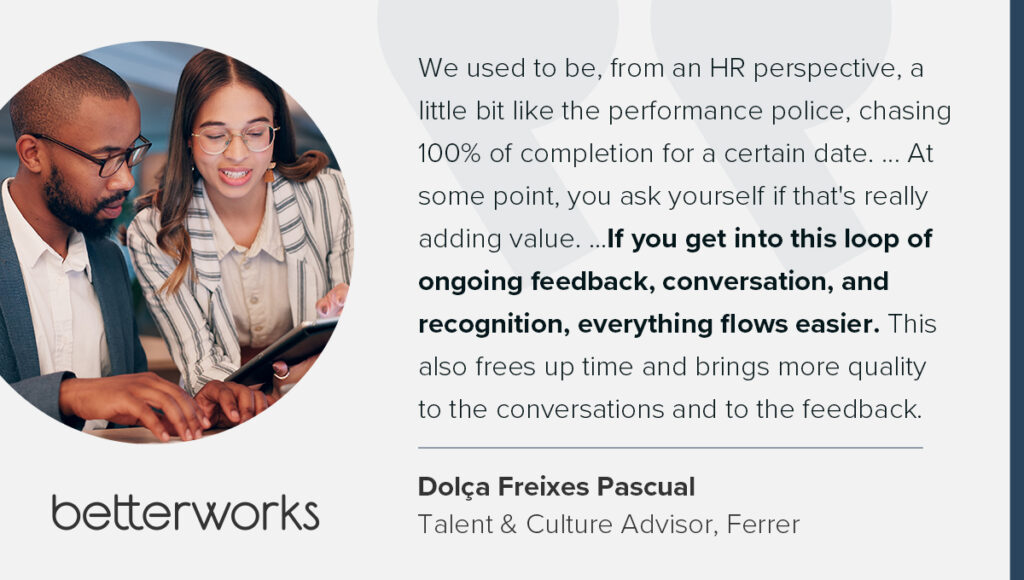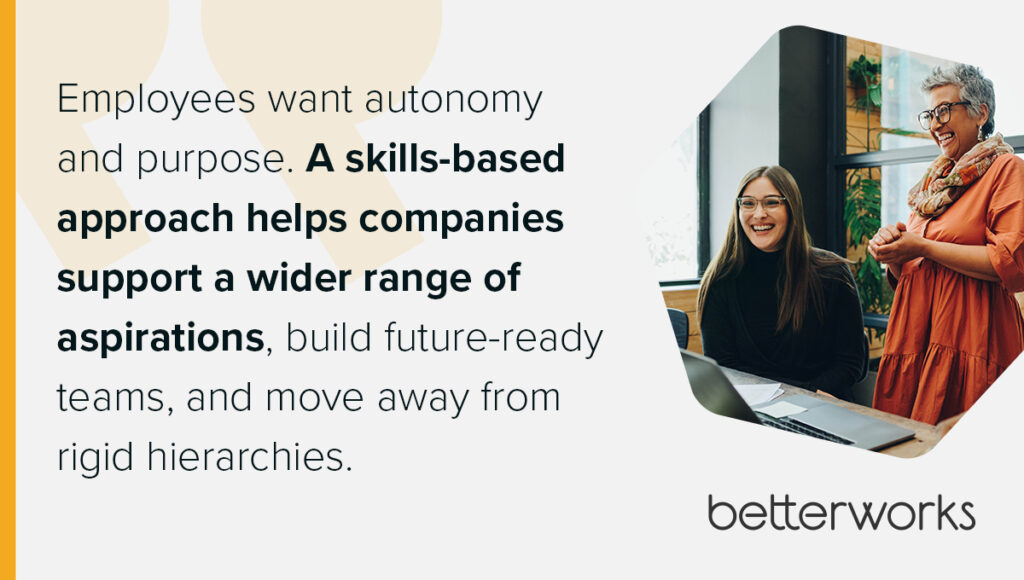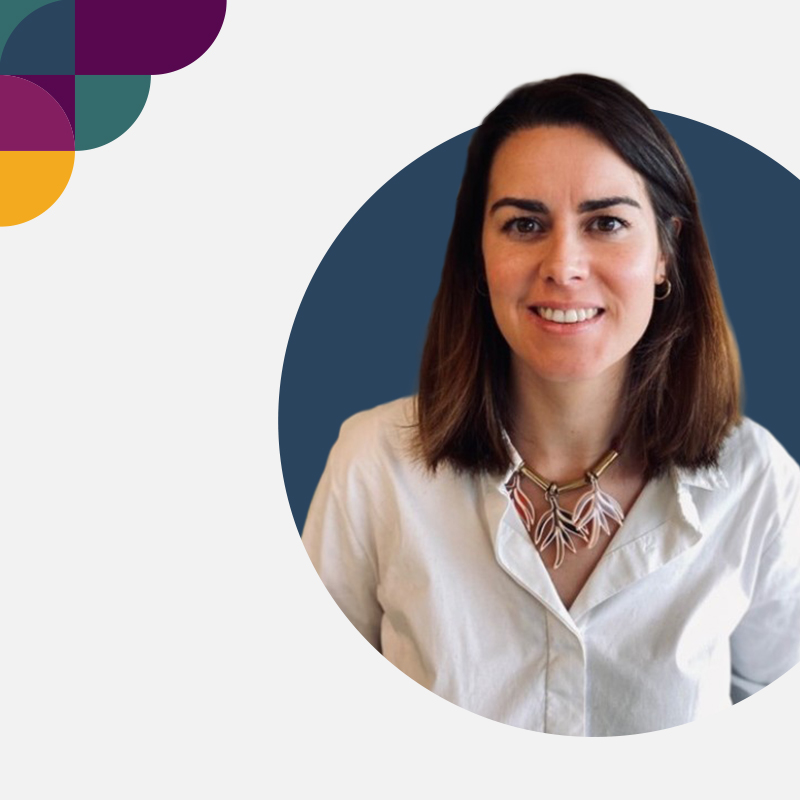We know traditional performance reviews don’t work. They’re too rigid, too infrequent, and too disconnected from how people grow. As expectations shift and work becomes more fluid, organizations need a better approach that prioritizes trust, clarity, and continuous development.
At Ferrer, that shift became an opportunity to build something more meaningful. “We used to have a performance model [that was] quite rigid,” says Dolça Freixes Pascual, the company’s talent & culture advisor. “With this evolution, and with this trust and accountability, we also saw the opportunity to evolve this process into more of an ongoing one-to-one conversation, an ongoing culture of feedback and recognition.”At EmpowerHR 2025 Europe, she shared how Ferrer reimagined performance management — not as a process to complete, but as a conversation to keep going.
Start by removing what’s not working
Before its transformation, Ferrer’s performance process was formal, ratings-based, and tightly tied to compensation. The primary goal wasn’t development — it was compliance.
The first step was to remake the structure. Today, the only required moment is the annual review, kept solely to ensure consistency. The rest of the year, managers are encouraged to lead ongoing, voluntary conversations focused on feedback and growth.
This flexibility allows teams to focus on what matters most in the moment. “Maybe for me, right now, I have an issue with my goal follow-ups, so I need a conversation that focuses more on my performance,” Dolça explains. “Or maybe I need a conversation more focused on career and future-oriented versus my colleagues. So again, this flexibility is allowing us to customize experience.”
Removing the rigid framework freed up time and reduced administrative pressure. “If you get into this loop of ongoing feedback, conversation, and recognition, everything flows easier,” she adds. “This also frees up time and brings more quality to the conversations and to the feedback.”
Build trust through clarity, not control
Trust became a foundational principle of Ferrer’s approach — not just a value, but a design philosophy. For Dolça and her team, that meant rethinking HR’s role from enforcer to enabler.
“We used to be, from an HR perspective, a little bit like the performance police,” she says. “Chasing 100% of completion for a certain date. … At some point, you ask yourself if that’s really adding value.”
By stepping away from rigid enforcement and trusting managers to lead, the HR team created space to think more strategically. “If we are able to leave behind this fear of losing control, we’re allowing space for ourselves to think in a bit more strategic way,” she explains. “To be more creative in our internal communication campaigns, to foster this culture of ongoing [conversations].”
That culture shift is backed by simple, flexible tools, including Betterworks templates that managers can tailor to fit the moment. “You can choose which feedback template, which conversation template you want to launch, based on the needs that different people in your team have in different moments of the year,” Dolça says.

Rethink what growth really looks like
Moving toward a more continuous, flexible performance model also required Ferrer to rethink how it defines growth.
“There are as many paths as individuals,” Dolça says. “We really don’t see us moving forward to career path definition… and that’s where the skill-based organization comes into place.”
Rather than expect every employee to climb a traditional ladder, Ferrer is embracing a more personal view of progress, one that reflects different ambitions and ways of working. “Maybe there’s someone, in a very legitimate way, whose ambition is to get to the top of the top,” Dolça explains. “But maybe there are others who just want to be the best expert they can be in the role they have right now.”
This mindset shift reflects a broader movement among organizations: growth isn’t one-size-fits-all. Employees want autonomy and purpose. A skills-based approach helps companies support a wider range of aspirations, build future-ready teams, and move away from rigid hierarchies.
But systems alone don’t create change; people do. “Managers are really the key in all these transformations,” she says. “If middle managers… don’t buy in, and they don’t adopt it, it’s nothing.”
By replacing control with clarity and structure with purpose, Ferrer is showing how continuous performance management can unlock growth, trust, and adaptability across the organization.

How continuous performance management builds trust and growth
Ferrer’s journey shows what’s possible when performance management is treated as a culture. By stepping away from rigid, ratings-based systems and focusing on real conversations, the company created space for people to grow with purpose.
With flexible tools, a clear philosophy, and support from managers, continuous performance management becomes something teams actually use and value. It builds trust, unlocks development, and helps organizations stay aligned.
Looking to modernize your performance approach? Watch the full EmpowerHR 2025 Europe session.
Hear more from Dolça and other HR leaders


